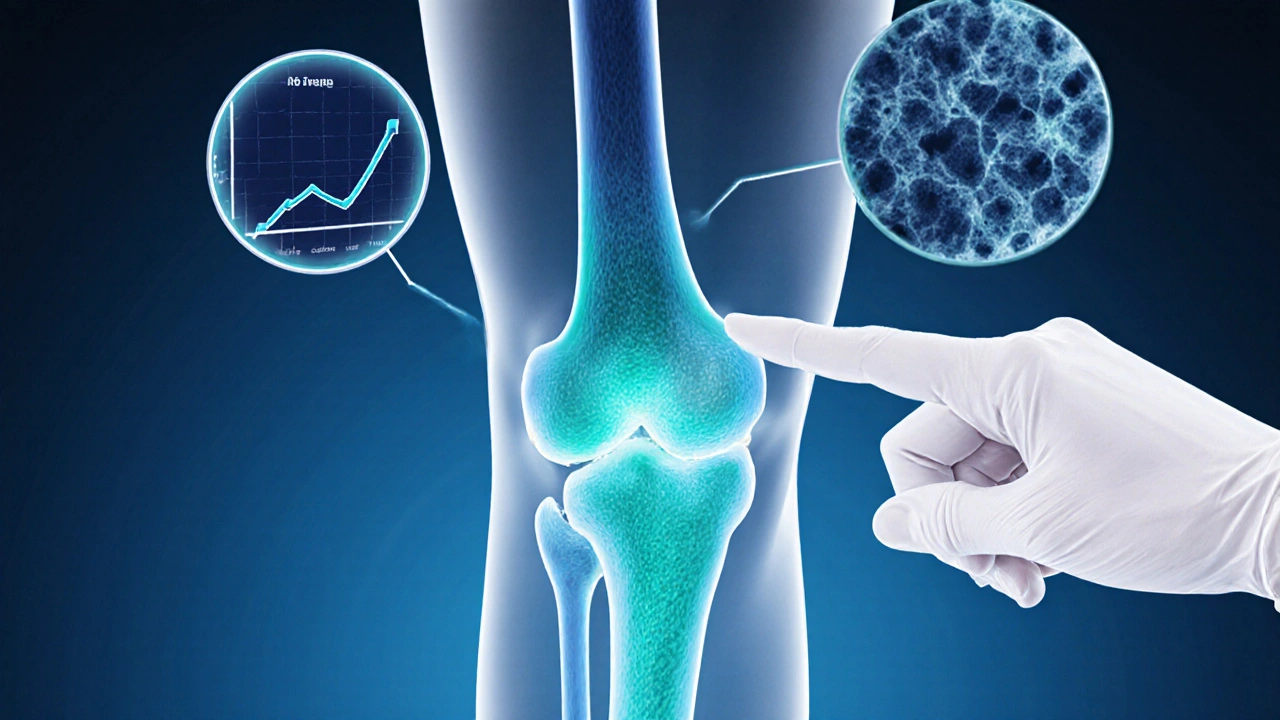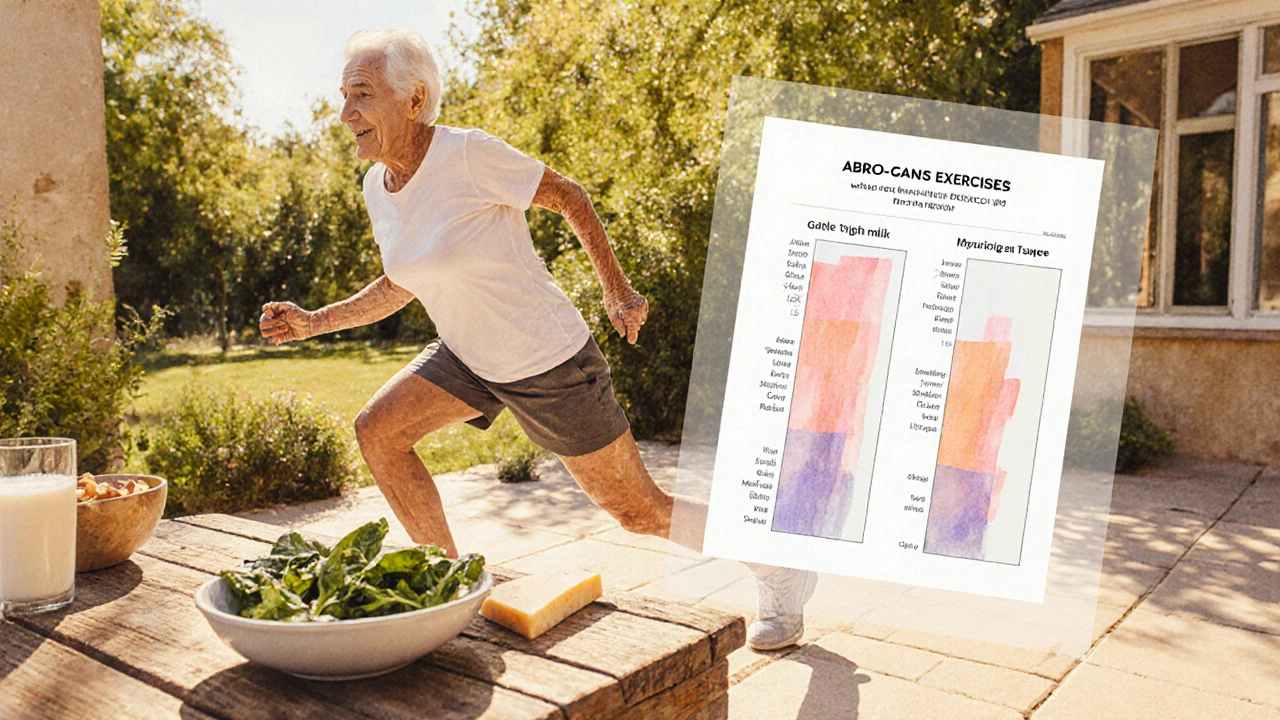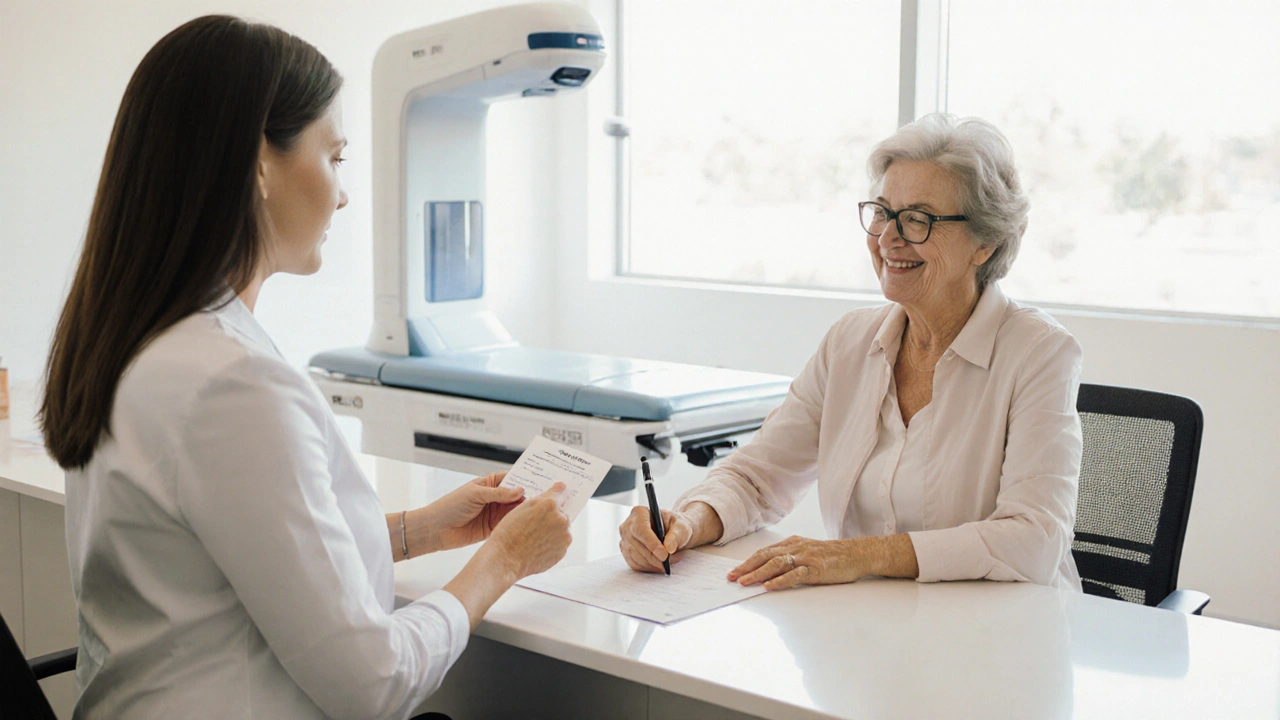Bone Health Risk Calculator
Assess Your Bone Health Risk
This tool estimates your risk of bone fractures based on factors mentioned in the article.
When you schedule a bone health checkup is a preventive medical visit that evaluates bone strength, density, and risk of fractures, you’re taking a proactive step against bone damage. Many people think their bones are fine until a break or severe pain forces a doctor’s visit. Regular checkups flip that script-they catch invisible bone loss early, give you data to act on, and dramatically lower the chance of a painful fracture.
Key Takeaways
- Bone‑density tests can detect loss up to 10years before a fracture.
- People over 50, post‑menopausal women, and those with risk factors should be screened every 2‑3years.
- DEXA scans remain the gold‑standard, but cheaper alternatives exist for low‑risk groups.
- Calcium, vitaminD, weight‑bearing exercise, and smoking cessation amplify the benefits of checkups.
- In NewZealand, most screenings are funded through the public health system when criteria are met.
Why Bone Damage Often Goes Unnoticed
Bone is a living tissue that remodels constantly, but loss happens silently. Early osteoporosis can reduce bone mineral density (BMD) by 1‑2% each year without any pain. Because the skeleton bears weight, people may mistake a subtle drop in strength for normal aging. The result? A simple stumble can cause a hip fracture, especially in older adults. Detecting that invisible decline is the primary reason doctors recommend regular screening.
What a Regular Bone Health Checkup Includes
A comprehensive checkup looks at three pillars:
- Medical history review - risk factors like family history, steroid use, or chronic illnesses are logged.
- Physical examination - doctors assess posture, spinal curvature, and areas of tenderness.
- Bone density testing - the actual measurement that tells you if your BMD is normal, low, or osteoporotic.
Doctors may also order blood work to check calcium, vitaminD, and thyroid levels, all of which influence bone health.

Types of Bone Screening Tests
Several imaging techniques quantify bone density. Below is a quick comparison of the most common methods.
| Method | Accuracy | Typical Radiation Dose | Cost (NZD) | Best For |
|---|---|---|---|---|
| Dual‑energy X‑ray absorptiometry (DEXA scan) | High - gold standard | ~0.01mSv (very low) | 150‑200 (often subsidised) | All adults over 50, high‑risk groups |
| Quantitative Ultrasound (QUS) | Moderate - good for screening | None (ultrasound) | 50‑80 (portable clinics) | Rural or low‑resource settings |
| Peripheral Computed Tomography (pCT) | High - provides 3‑D detail | ~0.03mSv | 250‑300 (specialist centres) | Research, detailed fracture risk analysis |
Regular osteoporosis screening using DEXA remains the most reliable way to track changes over time.
Lifestyle Factors That Complement Checkups
Even the best scan can’t repair bone loss on its own. Here’s what the evidence shows works:
- Calcium is a mineral essential for bone formation; adults need about 1,000mg daily. Dairy, fortified plant milks, and leafy greens are good sources.
- VitaminD helps the body absorb calcium. Sun exposure for 10‑15minutes a day or a 1,000‑2,000IU supplement is usually enough.
- Weight‑bearing exercises-walking, jogging, resistance training-stimulate bone remodeling and can increase BMD by up to 2% per year.
- Avoid smoking and limit alcohol; both accelerate bone loss.
Who Should Get Checked and How Often
Guidelines from Osteoporosis New Zealand recommend:
- Women post‑menopause: baseline DEXA at 65, then every 2-3years.
- Men over 70: baseline at 70, repeat every 3-5years.
- Anyone with risk factors such as long‑term steroid use, rheumatoid arthritis, or a prior fracture should be screened earlier and more frequently.
Your primary care physician can order the test or refer you to an orthopedic specialist for a more detailed assessment if needed.

Getting Your Checkup in NewZealand
The public health system covers bone density testing when you meet the risk‑criteria. To arrange:
- Book an appointment with your general practitioner (GP).
- Discuss your personal and family history; the GP will complete the eligibility form.
- If approved, you’ll be sent to a radiology centre that offers DEXA scans-many are located in major hospitals or community health clinics.
- Results are usually available within a week and are interpreted using T‑scores (‑1.0 and above = normal, ‑1.0 to ‑2.5 = low bone mass, below ‑2.5 = osteoporosis).
Private clinics also perform DEXA scans, but unless you have private health insurance, the out‑of‑pocket cost can be higher.
Common Pitfalls and Pro Tips
Even with regular checkups, mistakes happen. Avoid these traps:
- Skipping the follow‑up. A single scan is a snapshot; you need a trend to act on.
- Relying on weight alone. You can be “skinny” yet have low bone density.
- Neglecting supplements when advised. If your blood test shows low vitaminD, a supplement can make a big difference.
- Not informing the technician about recent X‑ray contrast or metal implants. These can affect DEXA accuracy.
Tip: Keep a simple log of your BMD results, calcium intake, and exercise routine. When you bring this to your GP, they can quickly spot concerning trends.
Frequently Asked Questions
How often should a healthy 45‑year‑old get a bone density test?
If you have no risk factors, a baseline test at 50 is usually enough. However, if you smoke, have a family history of osteoporosis, or take steroids, ask your GP about an earlier scan.
Is the DEXA scan painful?
No. The DEXA table simply slides under you while a low‑dose X‑ray takes a few seconds. You’ll feel nothing but a slight cold sensation from the machine.
Can I get a DEXA scan at my local pharmacy?
Some larger pharmacy chains partner with imaging providers, but most scans still happen in hospitals or dedicated radiology clinics. Check with your GP for the nearest accredited site.
What does a T‑score of ‑1.8 mean?
A T‑score of ‑1.8 falls in the “low bone mass” (osteopenia) range. It signals you’re losing bone faster than average and should consider lifestyle changes and possibly medication.
Are bone density tests covered by ACC or PHARMAC?
ACC does not fund DEXA scans directly, but if your GP deems it medically necessary, the test is covered under the public health system. Private insurance plans may also offer reimbursement.

Sarah Kherbouche
October 14, 2025 AT 13:23